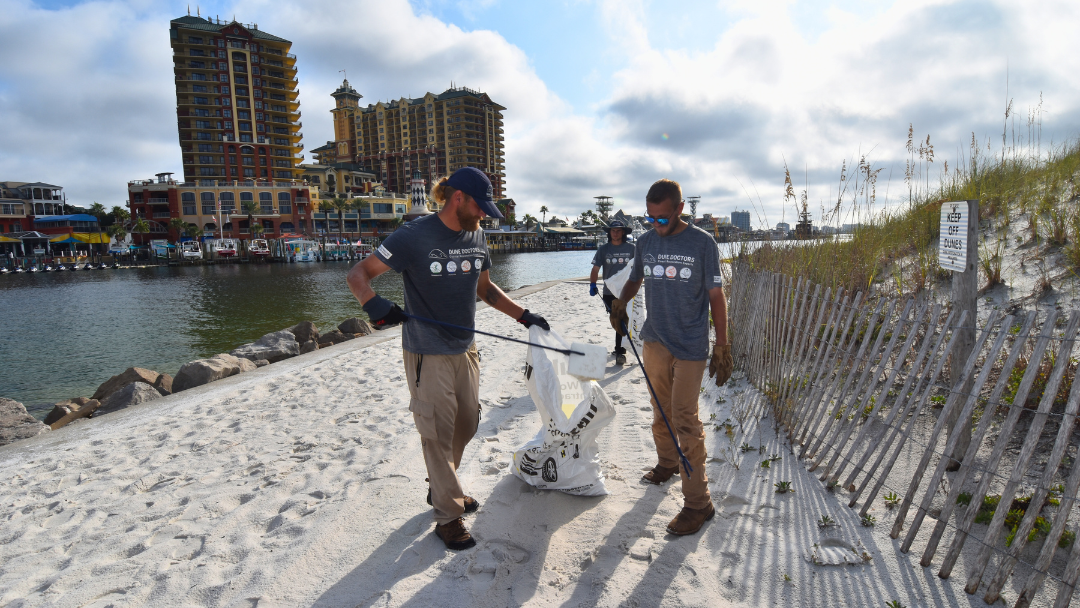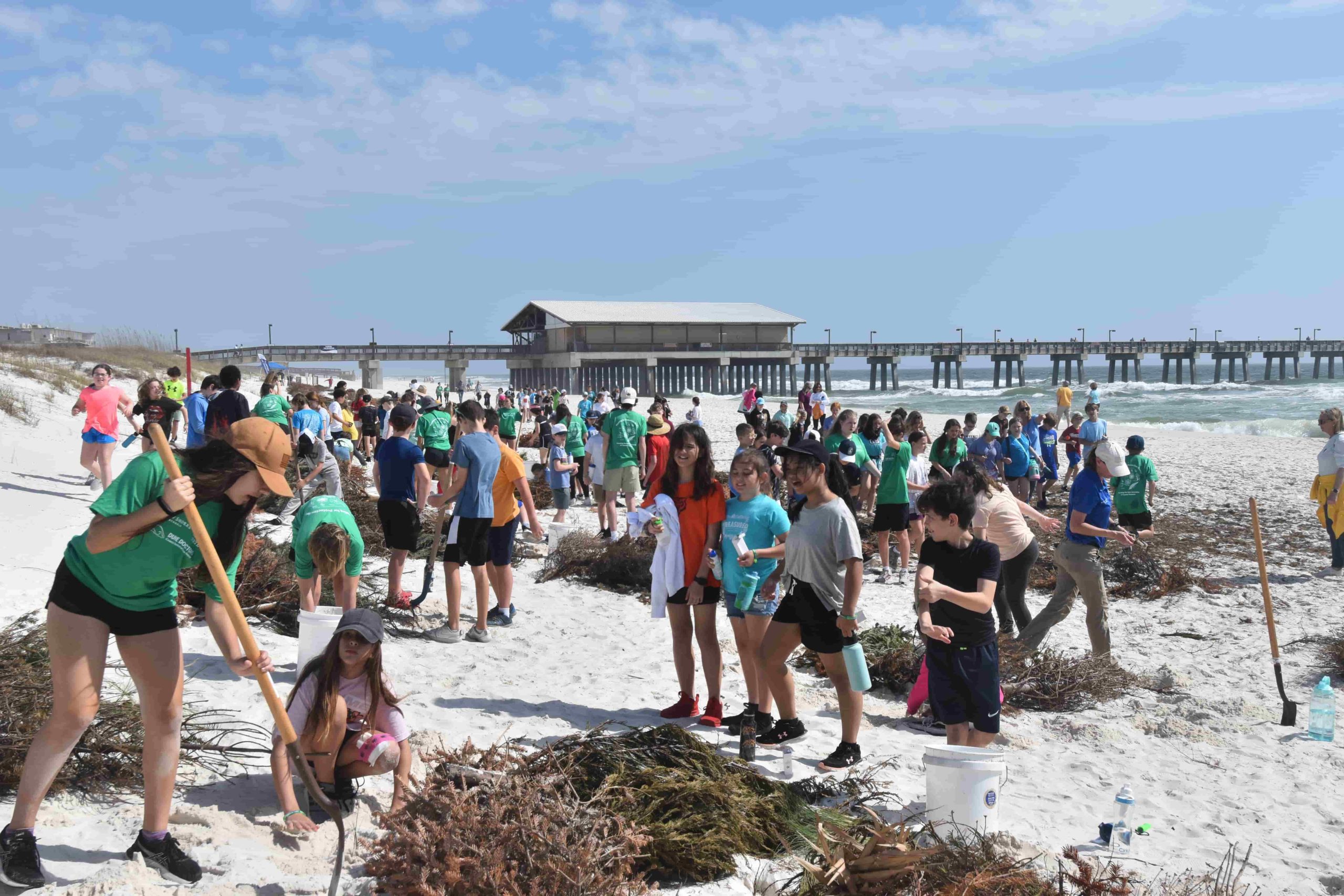Fire as a Destructive and Constructive Force
For some habitats, a fire can encourage new plant growth. In forests comprised of evergreen trees and shrubs, fallen trees and dead leaves accumulate to form a thick layer of decaying organic matter that blocks sunlight from reaching new plants and can negatively affect soil properties. Many believe that a constructive fire, originating from either a controlled burn or a natural event such as lightning, is an integral part of the development and sustainability of fire-prone forests. Fire, in this case, can speed up the process of decomposition, stimulate new growth by incinerating this thick buildup of organic material thus releasing nutrients into the soil, and help minimize the occurrence of wildfires. For most ecosystems, fire can destroy large habitats and, according to a publication by the National Center for Biotechnology Information, cause extensive soil erosion, water runoff, and air pollution.
Many Coastal Ecosystems are not Adapted to Survive Fires
Excluding certain shoreline areas along the West Coast where controlled fires are used as a preventative measure against wildfires, many coastal ecosystems are not adapted to survive burnings. If coastal vegetation is exposed to a fire, the plants weaken and eventually wither. Without healthy plants to stabilize the dune, the structure enters a state of heightened erosion. Coastal ecosystems have evolved to survive and recover quickly from storm surges, drought, temporary inundation, and high-speed winds; but fire damage can take coastal vegetation years to recover from.
The Sand-burial Cycle Helps Prevent Fire Hazards
Through a unique process called the sand-burial cycle, coastal plants experience similar outcomes to that of a forest that undergoes a constructive fire. Wind-borne and surge-borne sand particles are trapped by the plants, burying its base along with dead leaves and stems. Once buried, the dead organic matter (thatch) can decompose into nutrients that sustain new growth. However, due to factors like the steepness of a dune’s slope, plants may fail to undergo the sand-burial cycle and thatch will accumulate on the surface of the dune. Similar to the underbrush of a forest, the built-up thatch dries out during stretches of dry weather (where rain does not wet the accumulated dead organic matter), resulting in a layer of highly flammable material. This dry thatch poses a significant fire hazard that can be easily ignited by a cigarette, fireworks, or other sources of accidental sparks.

Edgewater Beach Condominiums, Destin FL: Dune Fire
A few years ago, on the 4th of July, a firework landed on the property of Edgewater Beach Condominiums in Destin and engulfed their dunes in 30-foot flames. Once Dune Doctors’ team of coastal restoration experts assessed the damage, our initial reaction was to reassure the property owners that the plants would most likely come back similar to the outcome of controlled forest burns that clear out decaying underbrush to reveal new growth. Click on the video below to see Suzanne Harris, who witnessed the fire, describe the incident.
We applied coastal-specific fertilizer to speed up the dune’s recovery; and, within a few months, the vegetation seemed to recover. Unfortunately, despite the promising start, the plants affected by the fire had a lower survival rate than plants installed elsewhere on the property. Below are four aerial images of the property that depict the slow dune recovery process. Years later, our team continues to work with Edgewater Beach Condominiums to maintain their protective dunes.
Edgewater Condominiums’ Dune Timeline from 2013 – 2018




The Negative Effects of Thatch Extend Beyond Fire Threats
Unless powerful storm surge erodes the surface of the dune, thatch will continue to accumulate and, over time, negatively affect the ecosystem in other ways. In

addition to posing a fire risk, thatch creates a habitat conducive for non-native species like rats to proliferate and attract snakes, see related article. Wet thatch concentrates moisture on the surface of the dune and causes the plants’ roots to remain shallow. Shallow roots cannot anchor sand in place and will easily give way to storm surge erosion. Furthermore, decaying thatch can become breeding grounds for plant diseases that can kill your dune vegetation. If your dune vegetation is undergoing the sand-burial cycle, then mother nature handles the dead organic material. However, if you are in a situation where your plants are not naturally being buried, extracting the thatch becomes necessary to sustain the dune’s health.
Removing Thatch is an Important Step Towards Preventing Fires and Achieving Sustainable Dune Growth
The integration of urban development and coastal ecosystems is made successful and sustainable through healthy interdependency. The construction that has altered wind paths, unfortunately, impact dune formation and potentially contribute to the widespread increase of thatch and fire hazards. Coastal property owners that have a thick layer of thatch on their dunes can intercede to support healthy dune development by removing the dry plant material wind did not bury. Removing the thatch aids in revitalizing the existing vegetation and encouraging healthy root growth to further stabilize loose sand. Because thatch accumulation causes shallow roots in coastal vegetation, the removal of thatch (dethatching) should be left to professionals who know how to extract the dead plant material without uprooting living vegetation. To read more click here.
Sources:
Chen, Zhong. “Effects of Fire on Major Forest Ecosystem Processes: an Overview.” Ying Yong Sheng Tai Xue Bao = The Journal of Applied Ecology, U.S. National Library of Medicine, Sept. 2006, 2017, pubmed.ncbi.nlm.nih.gov/17147189/.






